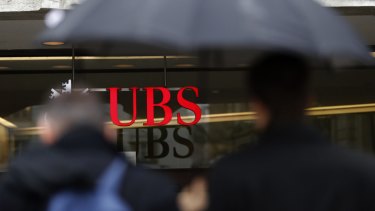Upside-down economy: The Banks Charging the Rich to Deposit their Money
Jonelle Marte| Sydney Morning Herald| 22 August 2019
https://www.smh.com.au/business/banking-and-finance/upside-down-economy-the-banks-charging-the-rich-to-deposit-their-money-20190821-p52j4l.html
The typical banking relationship looks something like this: Banks pay interest to depositors. Then they use that cash to issue loans and charge borrowers a fee, pocketing the difference.
But in some parts of the world, that relationship has been turned on its head.
Banks in Denmark and Switzerland recently announced new fees for wealthy clients with a lot of cash. Instead of earning interest, those savers will pay the banks for holding their deposits.
The shift toward negative interest rates in some parts of Europe comes as central banks step up efforts to spark stagnant economies. Nations that are in or near a recession are pushing rates down in the hopes it will encourage people to borrow and spend more. In some countries, including Japan, yields have been pushed so low that they are now in negative territory.Advertisement
Some banks – which struggle to make money when interest rates are low, much less negative – are finding creative ways to adapt to the new environment.
Jyske Bank in Denmark, announced Tuesday that it will start charging a 0.6 per cent fee in December for customers with more than 7.5 million Danish crowns ($1.7 million) in deposits. It follows a similar move from UBS Group in Switzerland, which announced last month that customers whose deposits exceed 2 million Swiss francs ($3 million) will need to pay an interest fee of 0.75 per cent after November.
Negative interest rates present challenges for banks, said Greg McBride, chief financial analyst for Bankrate.com. When rates are on the rise, banks can earn more off of loans. When rates are falling, banks have to lower what they charge on loans, reducing their profits. And when rates are negative, some banks, including the Jyske Bank in Denmark, are pushed to pay borrowers for taking out loans, upending their business model and removing a main source of revenue.
“If they’re paying borrowers to borrow money, that’s not a business,” McBride says. “The money has to come from somewhere.”
Hence, the charges on deposits.
The move from Jyske Bank was sparked by expectations that the negative interest rates in Denmark could last for several years. This month, the Danish lender began offering an interest rate of -0.5 percent on 10-year mortgages, meaning that borrowers over time would pay back less than what they had borrowed. Video Player is loading.
Global stock markets fell heavily as the fear of recession has increased.
“Conditions in money and capital markets remain very challenging,” UBS said in a statement. “We assume that this period of low interest rates will last even longer and that banks will continue to have to pay negative interest rates on customer deposits at central banks.” The fee applies only to deposits in Switzerland.
Some economists say negative bond yields could have unintended downsides. For example, some banks that are hesitant to charge savers for deposits because they don’t want to drive away customers might try to make up costs by increasing the rate they charge on loans, says Ben May, director of global macro research for Oxford Economics. In other cases, consumers spooked by negative interest rates may become more cautious and boost savings, instead of spending more, he said.
“You think ‘I’m not getting those high returns I was expecting any more so I’m going to have to save more,'” May said.
It’s important to remember that the fees on deposits are targeting the wealthy, which means most consumers will not be affected, McBride says. It may also be a while before U.S. banks follow suit.
Though investors and economists generally expect the economy to grow more slowly, some experts point to strong consumer spending as a sign that the US is not on the verge of recession. Interest rates are also still positive in the states and Federal Reserve officials have some wiggle room if they need to lower interest rates to boost economic growth.
The Washington Post


 Origin Finance is a
Origin Finance is a
Leave a Reply
Want to join the discussion?Feel free to contribute!